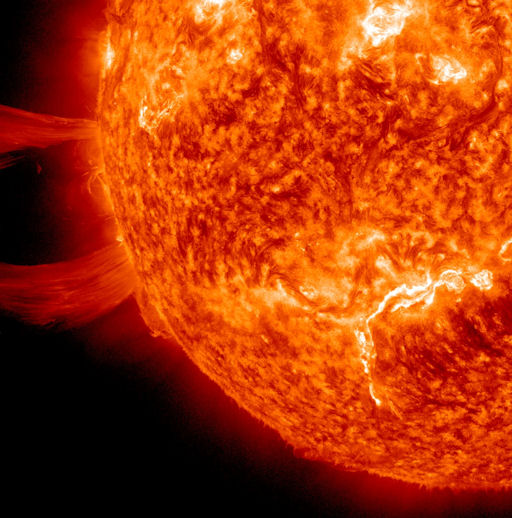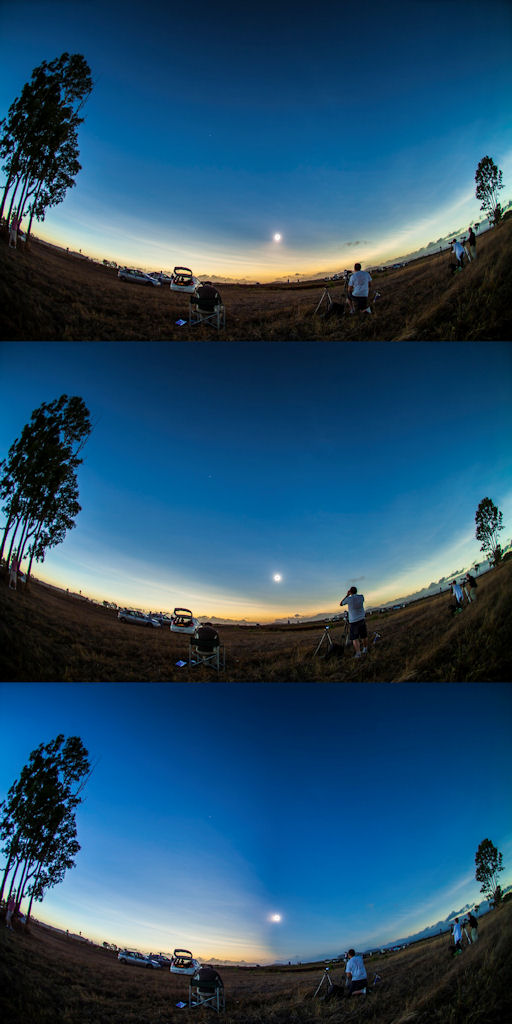Hang the Transit of Venus on your wall! Hubble-quality images from NASA's Solar Dynamics Observatory are now available as metallic posters in the Space Weather Store. | | |
MILD LEONIDS: Earth is passing through a stream of debris from Comet Tempel-Tuttle, source of the annual Leonid meteor shower. The Leonids are famous because they sometimes come in storms of a thousand or more meteors per hour. This year's stream crossing is not a central one, however, so the display is expected to be mild. Forecasters predict no more than 15 meteors per hour when the shower peaks on Nov. 17th. [meteor gallery] [meteor radar]
HUMONGOUS ERUPTION: A truly gigantic explosion happened on the sun yesterday. On Nov. 16th, magnetic fields snaking halfway across the sun's southern hemisphere erupted in tandem, producing a prominence so big, it doesn't fit inside this image from NASA's Solar Dynamics Observatory (SDO):

The blast hurled a CME into space, but the cloud does not appear to be heading for Earth.
A movie of the event, prepared by Steele Hill of the Goddard Space Flight Center, shows magnetic fields in concerted motion across an expanse of solar "terrain" more than 700,000 km wide. Observations by SDO have shown that such wide-ranging eruptions are not uncommon on the sun--the great Global Eruption of August 2010 being the iconic example. Solar flare alerts: text, voice.
Realtime Space Weather Photo Gallery
INSIDE THE SHADOW OF THE MOON: On Nov. 13/14, the Moon passed directly i front of the sun. This arrangement, which produced a total eclipse, cast the shadow of the Moon directly down on northeast Australia. Using a wide-field camera, eclipse-chaser Alan Dyer photographed the shadow as it raced across the sky over Lakeland Downs, Queensland. Scan the images, then read Dyer's account of the shadow-transit below:

"This collage of wide-angle shots shows the motion of the Moon's conical shadow," he explains. "At top, you can see the bottom edge of the shadow just touching the Sun. This was second contact and the diamond ring effect that begins totality. The middle frame was taken near mid-eclipse and shows the bright horizon beyond the Moons shadow. However, the Sun is not centered on the shadow because we were located well north of the eclipse's center-line, where we had gone to escape nearby clouds. The bottom frame was taken at the end of totality as the first bit of sunlight bursts out from behind the Moon. Notice the sun sitting at the well-defined left edge of the Moon's shadow. The shadow moved off to the right."
People who have experienced total eclipses first-hand say the Moon's shadow is one of the most amazing aspects of the experience. Its arrival causes many birds to stop singing; a hush descends on the landscape as the sky darkens and the air temperature suddenly drops. The Moon's shadow lances more than a quarter million miles across the silent vacuum of space, and when it lands on Earth, it seems to bring a bit of otherworldly cold with it.
For more otherworldly images of the eclipse, browse the gallery:
Realtime Eclipse Photo Gallery
Realtime Noctilucent Cloud Photo Gallery
[previous years: 2003, 2004, 2005, 2006, 2007, 2008, 2009, 2011]

